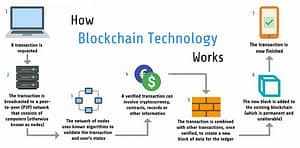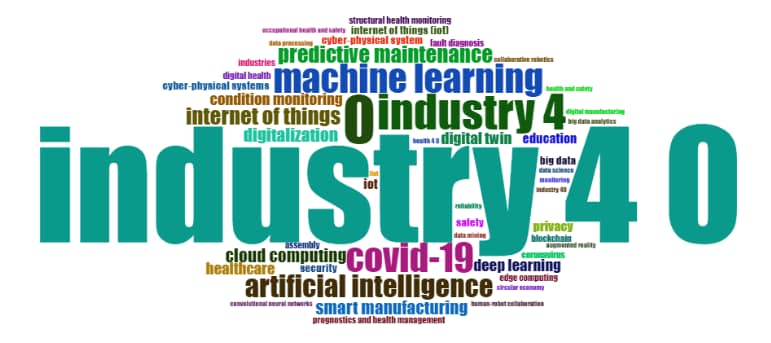Industry 4.0 in healthcare involves use of a wide range of modern technologies including digitization, artificial intelligence, user response data (ergonomics), human psychology, the Internet of Things, machine learning, big data mining, and augmented reality to name a few.
The healthcare industry is undergoing a paradigm shift thanks to Industry 4.0, which provides better user comfort through proactive intervention in early detection and treatment of various diseases.

The Fourth Industrial Revolution, otherwise known as Industry 4.0, is advancing healthcare to unprecedented comfort levels on the foundation of digitisation, artificial intelligence, and 5G telecommunication . Different digital projects have been developed globally by incorporating digital diagnostic systems which have significantly improved agility in X-ray and MRI investigations. This has, in turn, allowed quick diagnosis of patients’ healthcare data retrospectively as well as clinical anamnesis to provide prompt feedback.
A question worthy to be asked at this stage is: what is next?
The answer to this question primarily drove this review. The review begins by providing an insight into the interoperable development of the current ecosystem involving people, industry, business, and the government, which forms the backbone of Industry 4.0 in sharp contrast to the previous industrial revolutions.
In modern times, machines have become sufficiently intelligent to make decisions in real time and to feed those decisions through cloud-based technologies using neural networks and decision-support systems .
Ingredients of an Industry 4.0 Healthcare System
Internet of Things (IoT) :Industry 4.0
IoT is a term that refers to any device with network access . Modern devices/objects/networks of objects/systems are equipped with sensors, software, and network equipment. The network equipment and these sensors are capable of compiling and processing data arrays using internet protocols.
5G has made an enormous impact on IoT technology and economy due to its superior level of connectivity and improved functionality. The key 5G technology drivers are superfast broadband, ultra-reliable low latency communication, massive machine-type communications, high reliability/availability, and efficient energy usage .
The main area of applications of 5G-enabled IoT are the tracking of goods and materials, asset monitoring, remote data collection, self-service systems, remote service delivery systems, real-time market data, and flexible pricing models . As per the review of Likens et al. [80], it would appear that the Internet of Things will lead to be the most promising techniques that will change the gamut for industries and academia in the post-Fourth Industrial Revolution era.
Digital Manufacturing and Advanced Materials Processing :Industry 4.0
One of the main outcomes of the advances in digital manufacturing is 3D printing technology, also called additive manufacturing (AM). AM enables the processing of polymers, ceramics, glass, and metallic alloys. Using approaches such as the Design for Additive Manufacturing (DfAM) and Materials Design by Additive Manufacturing (MaDe-by-AM) novel materials can now be manufactured with ease, which includes tailored composition as well as structural and functionally graded materials .
By shape and composition complexity, the design of new porous materials and metamaterials can also be fabricated. Moreover, the flexibility of maneuvering the printing head allows on-site printing of freeform shapes, which are potentially useful to develop custom-sized implants or prostheses . Digitalisation of industrial manufacturing is developing due to the implementation of design strategies for new materials development .
Now, these additive technologies allow the printing of concrete buildings/structures . Additive manufacturing of concrete structures is much more promising for fast construction in complex natural environments compared to other techniques.

Digitalisation in Medicine :Industry 4.0
The term Medicine 4.0 is closely related to Industry 4.0; it describes the fourth stage in the development of medicine. Modern medicines which emerged around 150 years ago are undergoing a digital journey with the help of robotics, internet and artificial intelligence. The introduction of AI systems in medicine is one of the most important modern trends in world healthcare.
Modern medical treatments cannot achieve their full potential without using advanced computing technologies. AI technologies are fundamentally changing the global healthcare system, allowing a radical redesign of the system of medical diagnostics, the development of new drugs, advanced analysis, testing, and treatment to enable advances in the field of transplantation surgeries .
Computational simulation using finite element analysis (FEA) is a crucial part of the digitalisation process in medicine . FEA allows medical engineers/industrial designers to study many inter-related concepts including, for instance, device stability and durability (e.g., predicting end-of-life of patient-specific implants).
FEA enables modelling of stresses within a material under different thermodynamic conditions . In an FEA model, the part is simulated and analyzed using representative physical behavior . Such an approach demonstrates weak areas of the part, and it allows enhancement of the design. Digitalisation and AI generally improve the quality of healthcare services while reducing costs for medical clinics.
On-Demand Healthcare :Industry 4.0
According to Fox , consumers are increasingly using online platforms to obtain medical information due to the following reasons:
-
47% wish to know more about their doctor.
-
38% would like to check a hospital and its medical facilities.
-
77% would prefer online medical appointments.
In the new regime of digital economy, medical professionals, just like freelance professionals, can provide their skills, talents, and expertise directly to the patients.
Several healthcare companies provide an online marketplace that connects medical workers directly with the required medical facilities. This results in a much more effective way to provide on-demand medical procedures and services to consumers. In turn, healthcare workers have now become a part of the digital healthcare industry providing patient-oriented treatments .
Telemedicine :Industry 4.0

Telemedicine is a rather modern trend that became especially popular during the COVID-19 pandemic. Such an approach enables support and care of patients in a non-crucial state. Telemedicine minimise the number of contacts between ill patients. Moreover, such educational support is important for chronic patients, and to prevent diseases . According to the data of John Hopkins, before the first global lockdown in March 2020, the number of televisits was approximately 50–70 per month. By May 2020, this number radically increased to 94,000. Moreover, after healthcare services were broadly reopened, the number of monthly televisits remained about 35,000 .
Technologically, this kind of telecommunication provided the direct transmission of medical information in various formats (medical history, laboratory data, X-ray images, CT scan results, video images, ultrasound, etc.), as well as real-time video conferencing between medical institutions or a doctor and patients.
The use of telemedicine enabled the provision of consultative medical services in those areas where patients do not have the opportunity to receive the help of focused specialists directly at a medical institution. Telemedicine is of no less importance even in developed countries. With its incorporation, treatment costs have significantly reduced, the quality of diagnostics has improved, and remote monitoring of health has become accessible.
This is especially important for elderly patients and patients with chronic diseases. For example, St. Luke University Health Network in Pennsylvania regularly hosts video conferencing to help elderly patients. They recognize that this social group is less likely to use mobile applications and is more comfortable with technologies that target desktops or laptops.
Data Privacy & Cybersecurity in Medicine and Healthcare :Industry 4.0
With progress in big data and its advancement into medical innovation, there are potential risks to patient data privacy . Healthcare is a prime target for cyberattacks, and even with continued investment in cyber security, critical vulnerabilities remain in many of the medical devices that hospitals rely on to treat patients . Modern healthcare requires advanced solutions that reduce risks due to cyberattacks. Alongside this, GDPR patient sensitive data also needs to be protected so that the privacy of patients is not compromised.
For healthcare organisations, it is extremely important to ensure proper handling of patient data not only according to GDPR, but also because it is crucial for transparency with patients . It can be said that the narrow scope of data privacy laws can be an issue. That can be traced to the U.S. health data privacy law (HIPAA), which regulates data between healthcare professionals and patients, but not un-identified data. For example, the data shared with a fitness trainer, tracking from smartphones, and data from various apps can be considered unprotected.
Areas leveraging AI in medicine.
| Goals | Effect |
|---|---|
| Analysis (including cross-sectional) of population data, registration data, Omix data, social networks | New correlations for further scientific research and medical applications |
| Analysis of medical images, creation of a system with an automatic initial level of description and interpretation of results | Improving the speed and quality of medical decision-making |
| Smart scripts for patient surveys | – |
| Clinical decision support system (CDSS), platforms for organizing CDSS as services | – |
| Operational quality control and intelligent benchmarking of healthcare delivery in an institution | Improving the speed and quality of expert work |
| Control of long-term consequences of medical care | Changing systems for assessing and analysing the provision of medical care |
| Systems for increasing adherence of lifestyle of citizens and patients to prescribed treatment | Reducing morbidity and improving the effectiveness of treatment |
| Modelling the activities of a medical organization | Improving the quality of management, optimizing costs |
| Wearable and other mobile medical devices for remote monitoring | Online/regular monitoring of health indicators |
| Smart training medical simulators | Improving the quality of training of medical workers |
| Medical data visualisation, including smart navigation during surgical interventions | Improving the speed and quality of medical decision-making, medical care |
In the area of big data and modern modelling, the medical industry would benefit from digital tools tailoring existing technology to the needs of the industry, healthcare professionals, and patients.
Blockchain technology

Blockchain has various applications in health care. For example, blockchain technology, has the potential to merge
patients’ medical information and prescription data from several locations into a single set of updated records .
For example, Rupa developed an Industry 5.0-based blockchain application to keep medical credentials on
the Remix Ethereum blockchain .
Liu suggested a new blockchain-based approach for a dependable and efficient medical record exchange system. One of the possible benefits of the suggested model is that it is a cost-effective technique that allows the user to immediately access the information without compromising security.
However, one potential disadvantage is that the research does not address how existing e-health records would be
integrated with the proposed architecture.
Christo advocated blockchain technology as a distributed solution to providing security while accessing
medical reports. The proposed scheme contains authentication, encryption, and data retrieval.
The authors claimed that the proposed framework protects the patients’ records compared to other existing techniques .
Kumar demonstrated a wearable kidney system based on healthcare 4.0 protocols and utilizing blockchain
technology. The author used game theory to design resource-constrained renal systems. The proposed system, according to the authors, would be an example of the shift away from specialist or departmental-centric methods and toward data and patient-centric approaches, bringing more transparency, trust, and good practices to the healthcare business .
Summary of transition from traditional care to patient-centric healthcare
| Parameters | Healthcare 1.0 | Healthcare 2.0 | Healthcare 3.0 | Healthcare 4.0 |
|---|---|---|---|---|
| Key objective | Enhanced performance and paperwork reduction | Boost productivity and data exchange | Delivers patient-centred services | Offer real-time analytics and reporting services |
| Target | Effortless automation | Collaboration with other organisations | Physical interaction with patients | AI-based interaction with real-time monitoring and diagnostics |
| Information transmission | Intra-organization | Within a community of hospitals and doctors | Within a country | Healthcare distribution network around the globe |
| Major technologies utilized | Laboratory information management systems | Cloud computing and electronic data interchange | EMR, AI, IoT, CPS | |
| Demerits | Standalone devices with limited computational resources | Only sharing critical information without interacting with patients | Different protocols with little accessibility | Industry 4.0 untested technologies |





